
Issue #: 141
Published: May / June 2015
- Price per issue - digital : 5.40€Digital magazine
- Access to Multihulls World digital archives Digital archives
At the start of 2010, Sophie and family set out from South Africa on a trip around the world. After 35000 nautical miles onboard "Banana" the crew reveal how they fell in love with Vanuatu...
It's the 1st of January 2010. The starting date of our round the world trip had been in our diaries for 4 years. We were ready, but there was no boat!
We had always assumed that we would sail a 50 foot monohull, ideally with a fin keel. However, under pressure from our sailing friends, and not wanting to look stupid, we decided to charter a catamaran for a family holiday with our four children. It was a revelation, and we had to amend the list of boats that we wanted to test. For each vacation, we hired a different catamaran from our list, and after two and a half years had crossed them all off. It was only in mid 2008 that we discovered a St Francis 50. I should say "rediscovered" as we had crossed it off our list a year earlier because the galley was too small, and the layout and decoration didn't suit our tastes. This one was a completely different boat. The skipper explained that the St Francis are semi-customized, and apart of course from the hull moldings are all different.
Two days later we were in the shipyard ordering our boat and drawing up the first draft of the plans.
For a year we spent two days out of every three weeks at the shipyard. The team were competent and welcoming, and they enjoyed innovating or finding new ways to do things. To test out the plans, they produced cardboard fittings. For us on "Banana" they came up with the biggest galley possible with a built in range. With the help of Duncan, the shipyard owner, we nailed down the technical side of things based upon our wishes and our plans (see inset).
Over time, the shipyard managed to integrate our requests into the build, and on the 28th August 2009 it was time to take to the water.
After a few months of testing it was time for the great family departure on the 2nd of January. (the 1st was a Friday and you can't leave on a Friday!) .
Banana is a St Francis 50. Currently in Thailand, it will complete its world tour when it arrives back in South Africa at the end of the year...
The first stage of our voyage took us as far as St Helena, where we "abandoned" our two eldest. One took a cargo ship back to the Cape to finish his schooling, whilst the other was going to live in Longwood and work for the Napoleon Foundation for 5 months before heading back to university in Montreal. Our journey carried on to the Ascension Islands, Brazil, Guyana, and all the West Indian islands from Trinidad to Puerto Rico, where we saw out 2010.
Having experienced a hurricane in 2010 in St Lucia, we decided to head north in 2011 in order to be out of the hurricane zone. After the Turk & Caicos Islands and the Bahamas, we headed north, reaching the US at Savannah, Georgia. We don't need to describe our feelings sailing by the foot of the Statue of Liberty, and along the coastline of Manhattan. We then headed further north up the eastern seaboard, as far as the Canadian border. Heading back south we stopped off again in New York to drop off some family, and then... got hit by our second hurricane, Irene! A first in New York.
We needed to head south, as it was already fall, and as "Banana" wasn't equipped with any heating, we wanted to avoid sleeping in wooly hats! We made it to Savannah via Chesapeake Bay in time for Thanksgiving, and then onto Florida, getting as far as Key West. We saw out 2011 in Cuba, where it was all jazz, cigars and good rum.
We had loved the US, in particular the North East. For European sailors it's a bit off the beaten track. In six months we only met two other french boats.
Two months after arriving in Cuba, we headed for Mexico, Belize and Guatemala, (where we stayed for more than four months), Columbia and finally Panama where we celebrated New Year’s Eve and saw in 2012 all together on the San Blas islands.
The crew of Banana at the start of their adventure in 2010: Sophie and Robert-Louis; Louis-Victor 18, Pierre-Loïc 16, Marie-Alizée 11 and Oscar-Louis 9.
2013 would be our Pacific year. We went through the canal in January, before visiting the Pearl Islands and then heading for the Marquesas via the Galapagos Islands. We spent 6 months in Polynesia, between the Tuamotu archipelago, Tahiti and the Society Islands before heading for Suwarrow, to show our respects to Tom Neal and his friend Moitessier. We crossed the famous dateline whilst heading for the Samoan islands and then travelled on to Wallis, the superb Fijian islands and finally New Caledonia, a remote corner of paradise. It was here that we saw out 2013.
During construction, cardboard fittings were made to help us confirm our choices.
2014 would be the year when we would discover places that we knew nothing about. Vanuatu, the Solomon Islands and finally Papua New Guinea. We hardly came across another yacht or tourist. Only incredible countries where the inhabitants must be pretty high up on the happiness scale.
In only three weeks, Vanuatu went straight into the top 3 in the hit parade of "Banana's" favorite stopover destinations, and we soon understood why in 2006, the very serious French Nouvel Economist magazine had crowned the Ni-Vanuatus the happiest people on the planet
Quick history lesson for the over-34s: Vanuatu used to be called the New Hebrides before independence in 1980, after 74 years as an Anglo-French condominium.
Toktok bislama, languis blong Vanuatu = We speak "bislama", Vanatuan language. However, English and French can be taught, meaning that the children in one family might speak different languages. Rather like on board "Banana"!
Upon our arrival, our first impression (and it's often said to be the right one) was of the genuine kindness of the the Ni-Vanuatus welcome. It's worth saying that we were only the fourth or fifth boat of the season to arrive, and the first to drop anchor at Ambrym, Malekula, Pentecost, Santo, Ambae and Vanua Lava...
Long before becoming Vanuatu, the New Hebrides were called the Islands of Taboos. We were therefore careful in each anchorage to follow tradition and take time to go and see the local chief and ask his authorization to wander around (some zones are forbidden for women) and to swim and to go fishing. Going through these formalities sometimes leads to an invitation to a kava ceremony, which is a kind of local aperitif. Kava, which is a root of the pepper plant, is a traditional drug which is said to leave one happy and content. It isn't chewed and spat out as in the past, but carefully pounded, mixed and filtered in pure water before your eyes. It is then drunk neat, from half coconuts. Don't get too excited though: it looks like greasy washing-up water and tastes of roots and wood, refreshing the mouth but leaving the palate numb, like a dentist's injection. Along with Marie, we were extremely proud of ourselves as we had gone through with the (normally) masculine ceremony, but don't ask us to go into any detail about the after effects...
And as a consequence, the galley and all fittings are eminently functional.
But what do you eat with Kava I hear you ask? "Kaï-kaï long tam before"! In Bislama, that means that the old traditional feasts (in other words cannibalism) are long gone! However, we did treat our senses to the market at Port Vila (the capital, on the island of Efate).
This enormous, colorful market is open 24/7 from Monday to Saturday. 35 hour weeks, labor department checks and health and safety rules all thankfully seem a very long way away. Even better, you don't need to buy a plastic bag when you pay, as no matter what you buy (chicken, sweet potatoes, oranges, cocoa pods) you will be offered a pretty woven basket...
We mainly stocked up on vegetables, as we could barter for the local seasonal fruits when they weren't kindly given to us in the villages. These scenes of daily village life, where money doesn't really have any value, are things which will stay with us for a long time: whether it was bathing, washing the crockery, or just the contacts that we made throughout our journey.
The Vanuatu archipelago is made up of around 40 volcanic islands along the Pacific ring of fire. It boasts 9 active volcanos, of which 7 are on land. The most famous of these, Mt Yasur which is on the island of Tanna is said to be the most accessible on earth. "Banana" and our friends on "Marick" were moored in the magnificent Port Resolution Bay, just 8 km of jungle from the volcano's opening. We got ourselves dropped off in a 4x4 just as night was falling. Reaching the edge of the crater, the spectacle which confronted us, quite literally took our breath away. It was scary too. A low growl, accompanied by tremors beneath our feet was followed by molten rocks being spat out above our heads. As another growl and boom began, the lava shot out 20 meters in front of us, and 100 meters above our heads!
The clouds rising from the twin volcanos on Ambrym also put on an extraordinary dawn show, after a choppy crossing. We had planned to head out with a local guide to get close to the craters, but bad weather changed our minds for us.
Despite this, Ambrym is still crammed full of other treasures, such as the giant, sculpted, fern-clad tree trunks, the tamtams or the Sand drawings, where the artist (there's no other word for it) draws traditional objects on the ground with their finger, without ever lifting their hand up. There is also the famous traditional Rom dance, where the Gods are exhorted to provide a good harvest of yams. Yams are the staple food here.
If you ever get a chance to sail in these waters, you will no doubt notice that the men wear a very elegant penile sheath (known as a "namba"). Our two captains, perhaps feeling challenged, made a point of getting hold of one each, for their respective sizes! This was a first in Fanla village, and the ladies were asked to keep a polite distance while the sheaths were being tried on
In each village it is advisable to greet the chief and ask for his permission to stay, and sometimes...the chief offered us fruit!
I wonder whether all you bungee jumpers out there know that the ni-vans who live in the south west of Pentecost Island have a tradition of holding jumps every Saturday morning from April through June. A carefully chosen creeper substitutes for the elastic, and the "diving board" is a thirty meter high tower, made of tree trunks held together with more creepers. After a bit of chanting, the contestant jumps into the void, encouraged by songs sung by (topless) cheerleaders, and jeered by groups of men in their penile sheaths. Unlike bungee jumping, the aim is to land without getting injured. This is undoubtedly one of the most amazing things that we have seen since we set off, along with the lobster sandwich in Maine, and Fakarava atoll's walls of sharks...
Mi lukemyu("see you soon" in Bislama)
"Banana's" crew are currently in Thailand, after scooting around Indonesia (from Raja Ampat to Sumatra, via Bali and Borneo).
The famous Kava ceremony... A guaranteed reaction!
2 x 54hp Yanmar motors with saildrives. One of them is equipped with a small 3kva 220v Yanmar generator.
A 950 watt solar panel
A bank of AGM Optima batteries (900ah + a 75ah starter)
The boat is 100% LED.
60 l/h 12v Spectra watermaker.
Freezer, fridge under the galley worktop, and a Cold Box in the cockpit for drinks, fruit and vegetables.
Standard oven and gas hob, direct drive LG washer/dryer, as the standard belt drives vibrate too much, and a barbecue (gas of course).
880 liters of diesel (4 x 220 liters) and 2 x 650 liters of water. A fifty liter hot water heater.
2 electric toilets and a small aircon unit which can be used when in port (in an anchorage, the air circulates well, but in marinas, the boat doesn't catch the wind).
A Maxwell Windlass with 100 meters of 10mm chain and a 40kg Rocna anchor with 2 x 64 electric winches. The other ones are manual.
Navigation equipment and electronics are by Raymarine. The onboard computer is a mini-tower built into the chart table. The onboard comfort is completed by an automatic radio and TV on a mobile arm to allow viewing from the outside.
A retractable bowsprit for a Code O or other sail, and an asymmetrical spinnaker.
Lewmar deck fittings, a Harken mainsail traveler and Quantum sails.
Impossible to resist trying on a penile sheath... Very becoming!
"Banana" is a fairly quick catamaran, and we can easily average 200 nautical miles per day. Once the wind hits 10 knots, the boat glides along at 8 knots, and more if the sea is calm and there is a crosswind. It's important not to overload her, and to keep an eye on the very large water tanks... The empty weight is 12 tonnes and 15 tonnes loaded up.
For our project, the St Francis struck a happy medium between speed and comfort. If we had wanted more speed, we would have needed a lighter boat and one which would have been less comfortable. After five years sailing, and 35000 nautical miles, we will be buying a new St Francis when we will be back in South Africa. As it stands, we haven't found better in this size, and we will be able to kit it out for just us two sailing, with a hull just for us, and one guest hull for when the children come aboard.
You can stock up on groceries at the Port Vila market.
A 30 meter high tower made from tree trunks, and a jumper attached only with a tree creeper: this is the amazing jump that the residents of Pentecost take on between April and June. Quite frankly amazing.
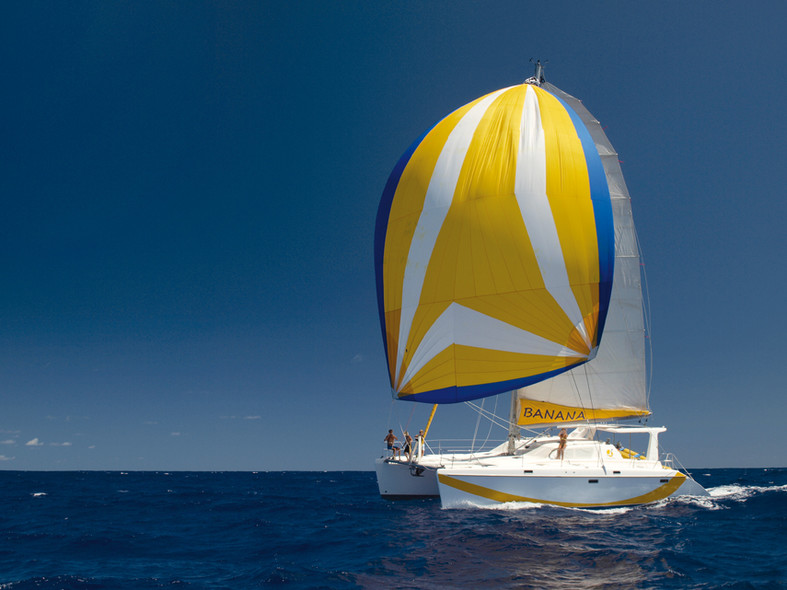
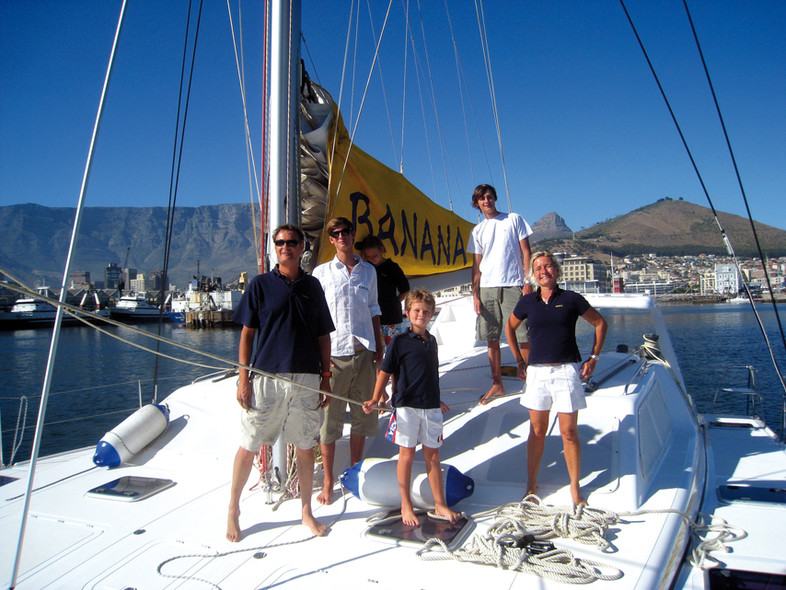
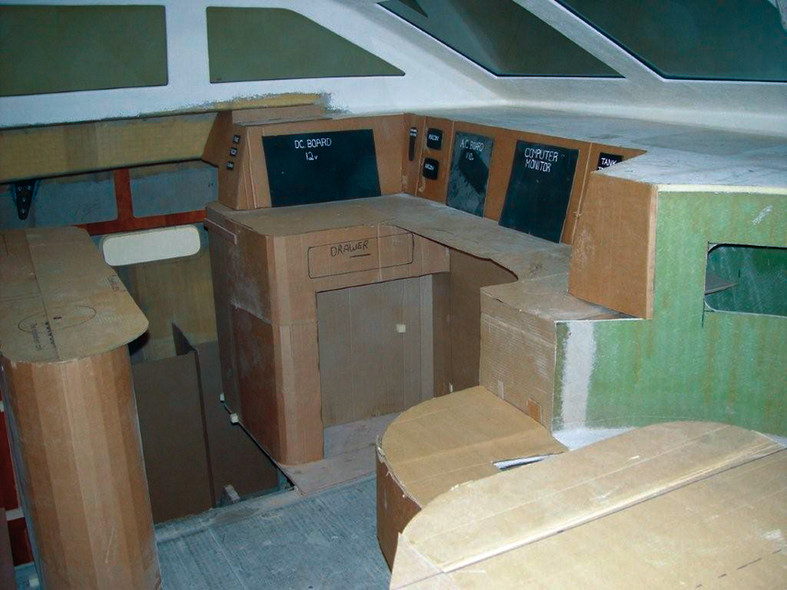
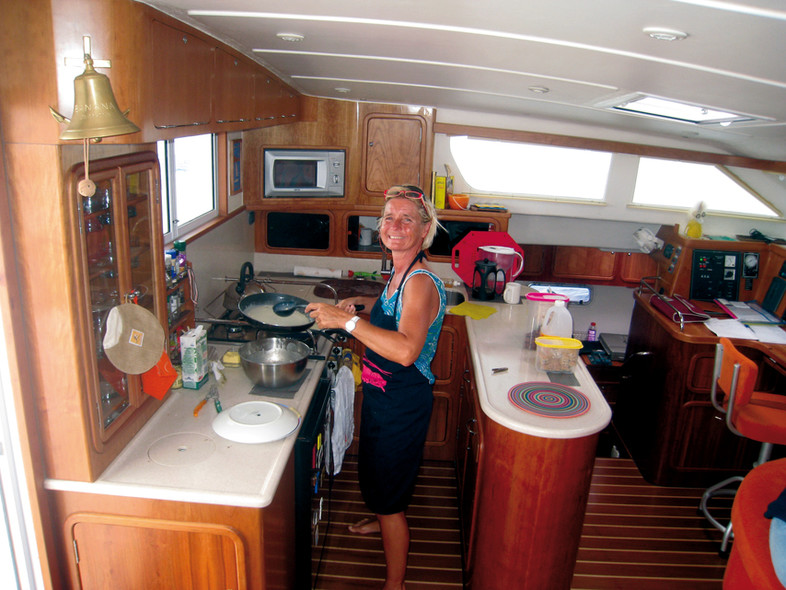
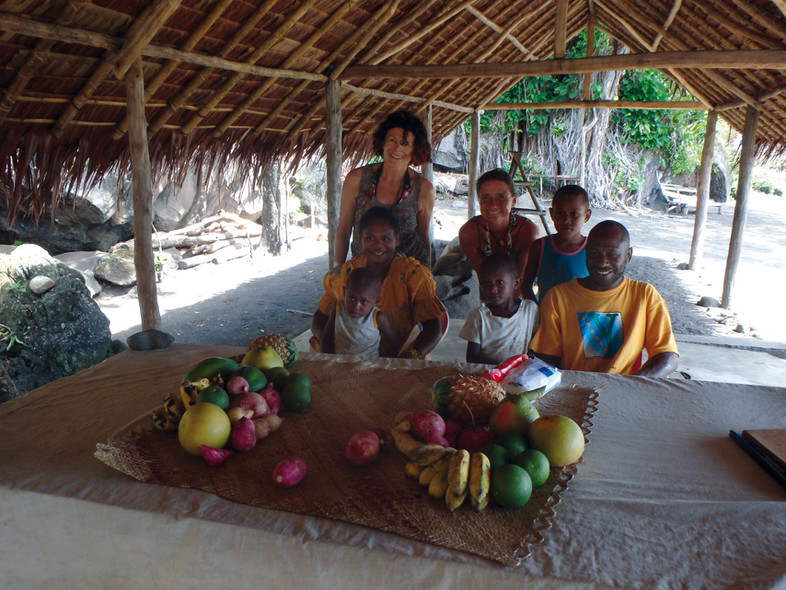
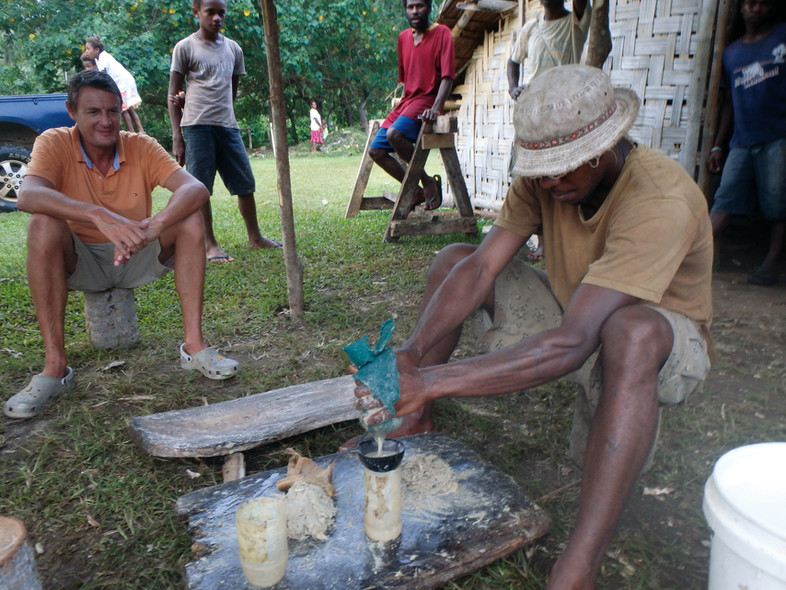
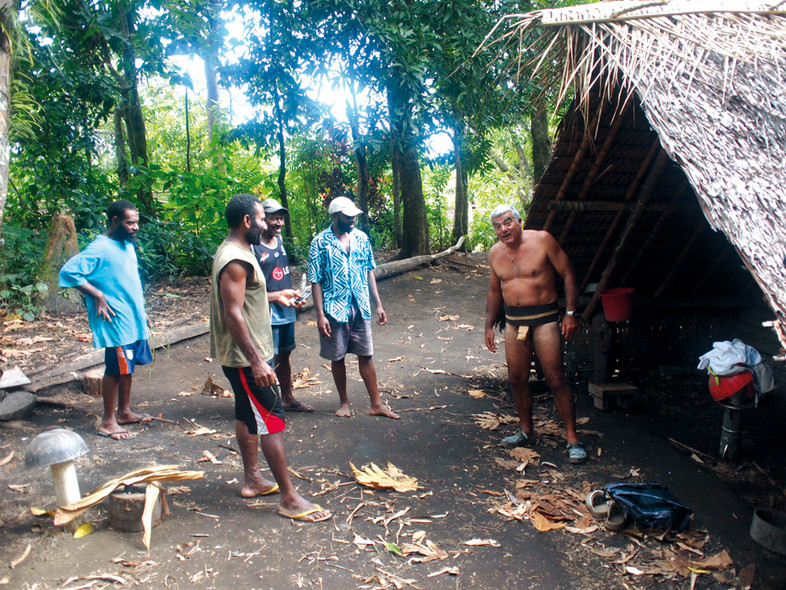
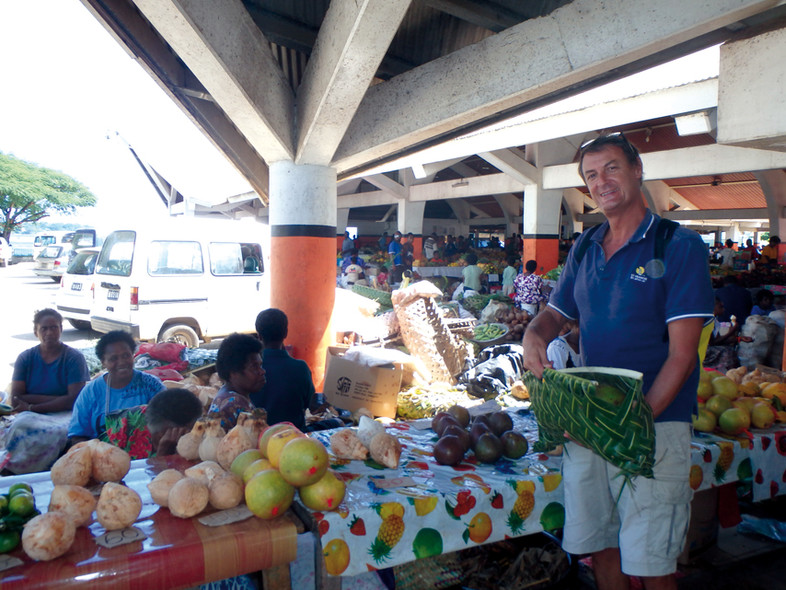
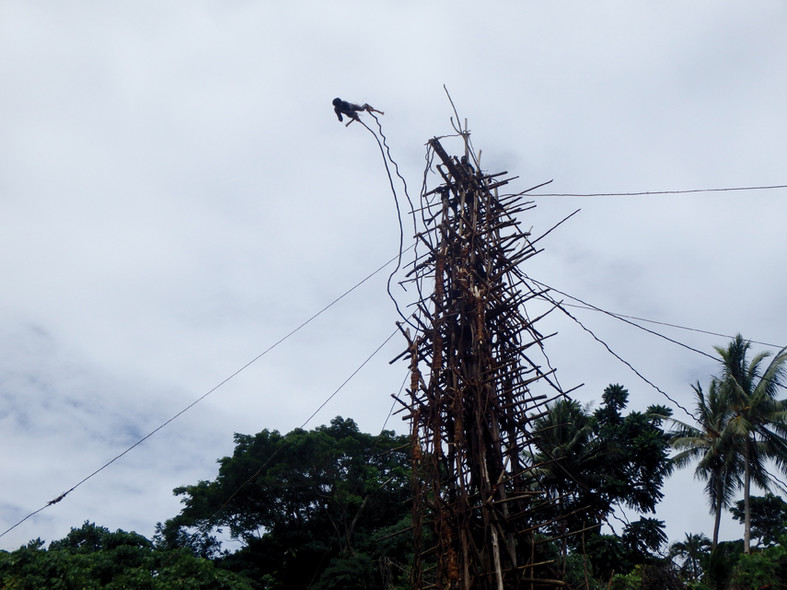
What readers think
Post a comment
No comments to show.